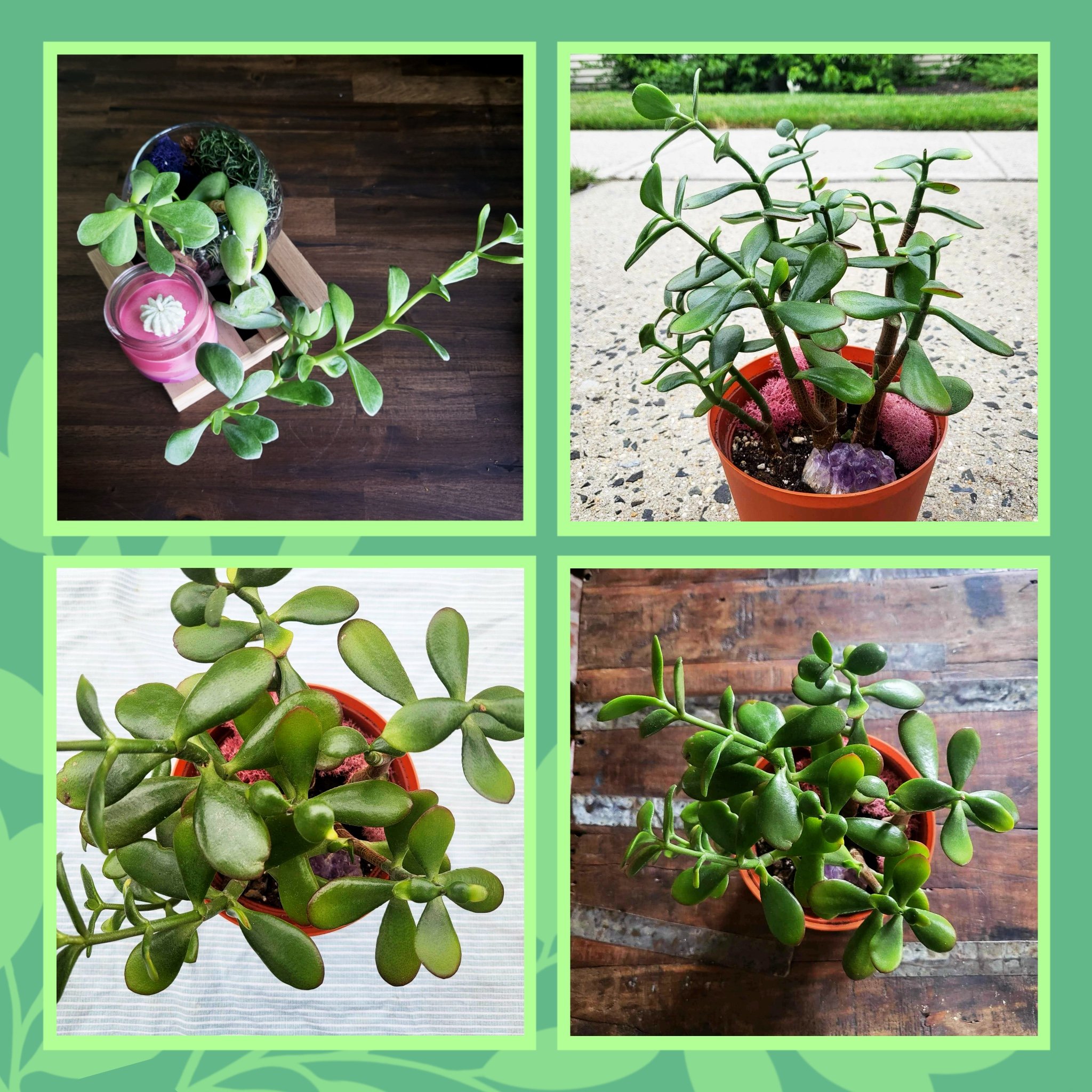Toxic Succulents: Plants You Should Keep Away From Pets
Since rebooting our Plant of the Month series, I realized that although most succulents are generally pet safe, there are a few popular ones that aren’t. Save yourself a trip to the vet and from finding out your cat has been chewing on your jade plant and getting sick, it’s not worth the head/heartache. Best to keep these 5 succulents far away from your pets:
Crassula
The Crassula genus has around 200 different succulent species that often have thick and either waxy or rubbery leaves. Some examples of these include the classic Jade Plant (Crassula ovata), String of Buttons (Crassula perforata), Campfire Crassula (Crassula capitella), and Watch Chain Plant (Crassula muscosa). Classic Jade Plants are also referred to as “Money Plants” as their round leaves are thought to resemble coins. If you’re looking to attract financial luck and have pets, Jade Plants are probably not for you as they can cause lethargy, clumsy movements, dry-heaving, and vomiting. But worry not, Bamboo is a great alternative for manifesting cash money and safe for cats and dogs.
2. Aloe
Another beloved houseplant that is tragically unfriendly to pets is Aloe vera. Sure, it can be a great salve for human and animal skin alike, but it’s not something you want your pets to munch on. And let’s be real, plenty of cats *ahem, my sweet menace Buffy* will chew on plants whether they’re bad for them or not. Aloin is a bitter, yellow liquid and toxic chemical found in Aloe leaves that can cause lethargy, vomiting, diarrhea, and red urine. This should go without saying, but a disclaimer just in case, you probably shouldn’t ingest Aloe either since it’s toxic to us too.
3. Kalanchoe
Kalanchoe is a genus with about 125 diverse species that should be kept away from pets. And of course, luck has it that my mother’s favorite succulent is the blooming Flaming Katy (Kalanchoe blossfeldiana). Hence she has to keep them hanging high up, or outside, so the cats don’t get any ideas. Flaming Katy aren’t the only Kalanchoe to worry about around your furry friends. The Panda Plant (Kalanchoe tomentosa), Aurora Borealis (Kalanchoe fedtschenkoi), and Paddle Plant (Kalanchoe luciae) are all also toxic to pets. A fun little fact about Kalanchoe, did you know that it was one of the first plants sent to space? A Kalanchoe species was sent by the Soviets on a resupply to the Salyut space station in 1979.
4. Senecio
Although technically part of the Daisy family, the Senecio genus is probably best known for its succulent species. Out of a 1000 flowering plants in this genus, over a 100 of them are succulents. Varieties of Senecio include: String of Pearls, String of Bananas, Blue Chalk Sticks, Pickle Plant, and many others. Each of them poisonous to pets and can cause drooling, vomiting, and diarrhea. Do yourself a favor and generally stay away from “String of…” plants!
5. Cacti
“Cactus makes perfect” but it may not be the perfect choice of houseplant for pet owners unfortunately. Although not all cactaceae are toxic, their sharp spines make them dangerous to pets regardless. Ingesting Coral Cactus (Rhipsalis cereuscula) for instance can cause gastrointestinal issues like vomiting and diarrhea. Other Cacti like the Prickly Pear (Optunia) are dangerous to pets due to their sharp texture which can cause skin irritation.







